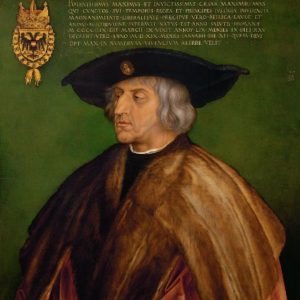To put things into perspective man has to know about the past. From the Romans to the present day, Spain has played an important role in the progression of the Western World. InSpain.news gives a resume of the history of Spain based on several (scientific) sources. This is part 9, the Habsburgs. Read parts 1 here,2 here, 3 here, 4 here, 5 here, 6 here, 7 here and part 8 here.
The daughter of the Catholic Monarchs, Joanna, married a good party in 1496, the Habsburg Philip the Fair, not to be confused with the French King Philip the Fair who lived two centuries earlier. As a result of this marriage with a Habsburg, Spain – since the discovery of the Americas an important colonial power, became also a power factor in Europe. The Habsburgs had managed to achieve an impressive expansion of territory in Europe through an intelligent marriage policy, which started with Maximilian I (1459 – 1519).
Maximilian

Maximilian was a descendant of the House of Habsburg and Archduke of Austria. His marriage to Mary of Burgundy made Maximilian, after her premature death in 1482, regent of the Netherlands as an observer for his four-year-old son Philip, who was entitled to the throne. Through the marriage of his son Philip to Joanna, the daughter of the Spanish Catholic kings, Spain also became part of the Habsburg Empire. In 1508 Maximilian was crowned emperor of the Holy Roman Empire.
Until 1515 Charles (the eldest son of Filip and Johanna and the later Emperor Charles V), whose father Philip had died in 1506, was under the guardianship of his grandfather Maximilian. Maximilian appointed a regent, Margaret of Austria, to govern the Netherlands. In order to counterbalance a pact between France, Bohemia, Poland, Hungary and Russia, Maximilian arranged marriage agreements in 1515, which eventually also brought Hungary and Bohemia under the House of Habsburg. An important reason for these agreements was that Hungary and Bohemia needed Habsburg support to confront the advancing Ottoman Turks.
Charles V
After Maximilian’s death in 1519, the Habsburg possessions passed into the possession of his eldest grandson, Charles (V). Charles inherited the Spanish possessions from his mother’s side. Charles V thus became king of Spain and its overseas territories, Burgundy, the Netherlands and large parts of Italy. In 1522 Charles handed over the Austrian possessions to his brother Ferdinand. Consequently he was able to deal more intensively with the Atlantic part of his empire.
“Better to acquire territories by marriage than by war”
In the course of the 16th century, Spain became the most powerful country in the world. This was after the nation-building on the Iberian Peninsula and the discovery of the Americas under the Reyes Catolicos. This power was also partly due to the marriage of Joanna to the Habsburg Philip. The adage of Maximilian I, “better to acquire territories by marriage than by war”, had certainly paid off. The Habsburgs ruled Spain from 1506 to 1700. These were successively: Philip I (1506), King Charles I as Emperor Charles V (1515-1556), Philip II (1556-1598), Philip III (1598-1621), Philip IV ( 1621-1665) and Charles II (1665-1700).


